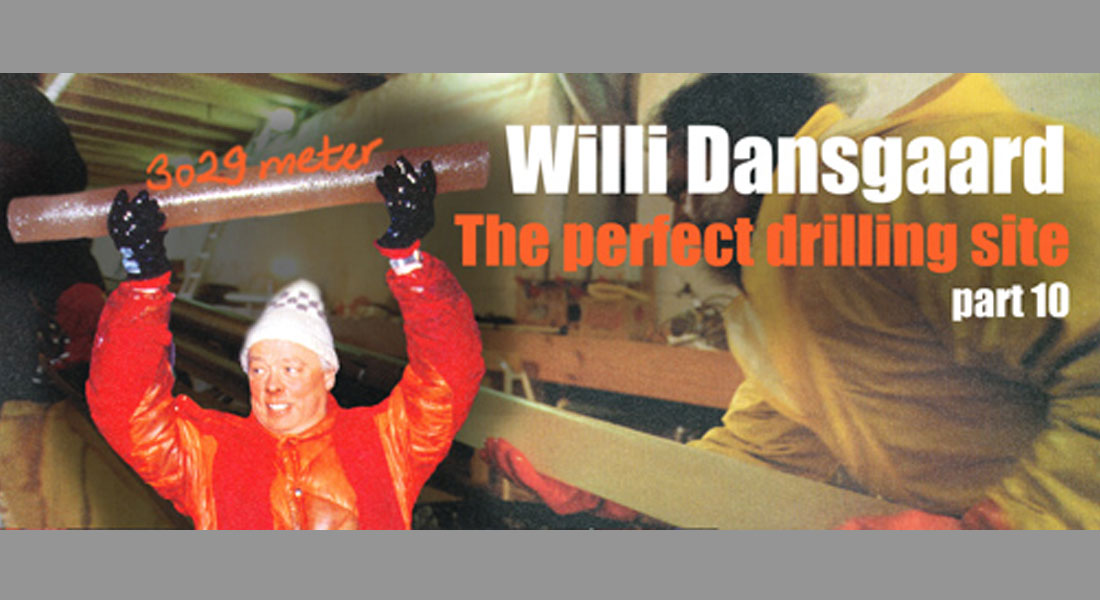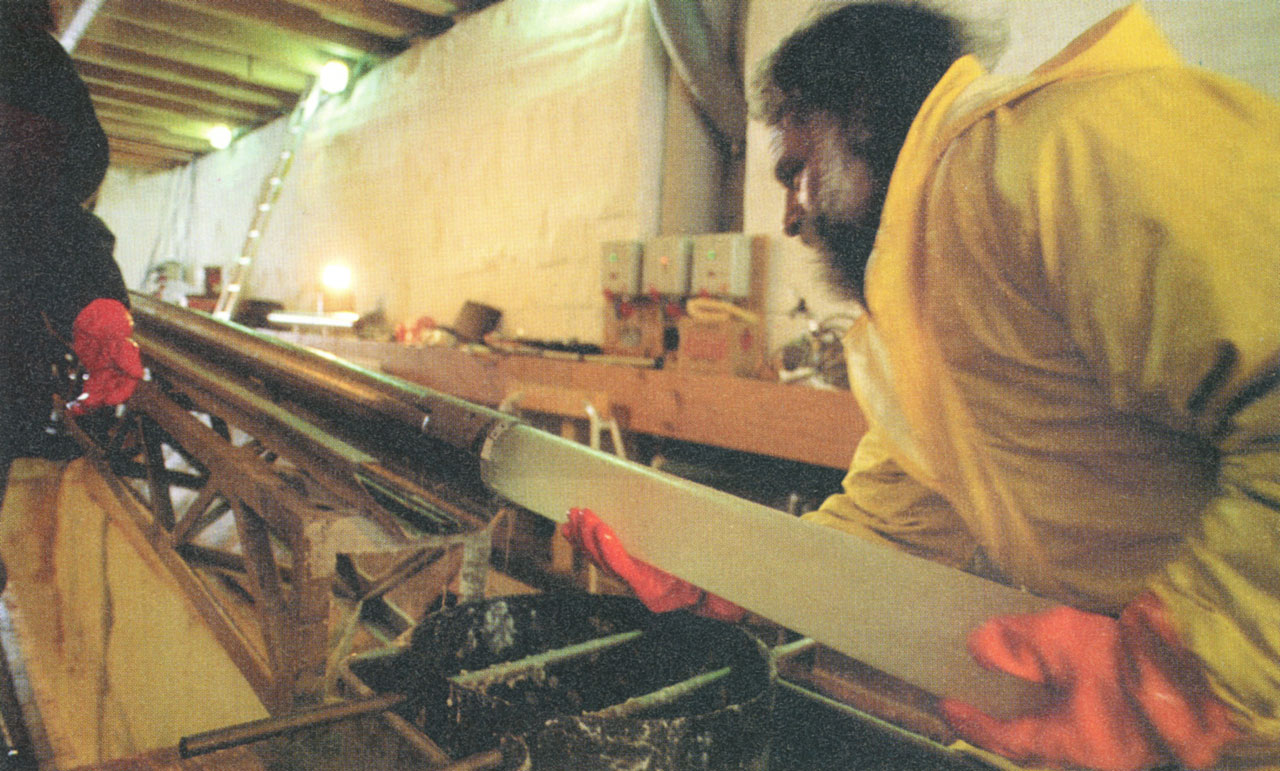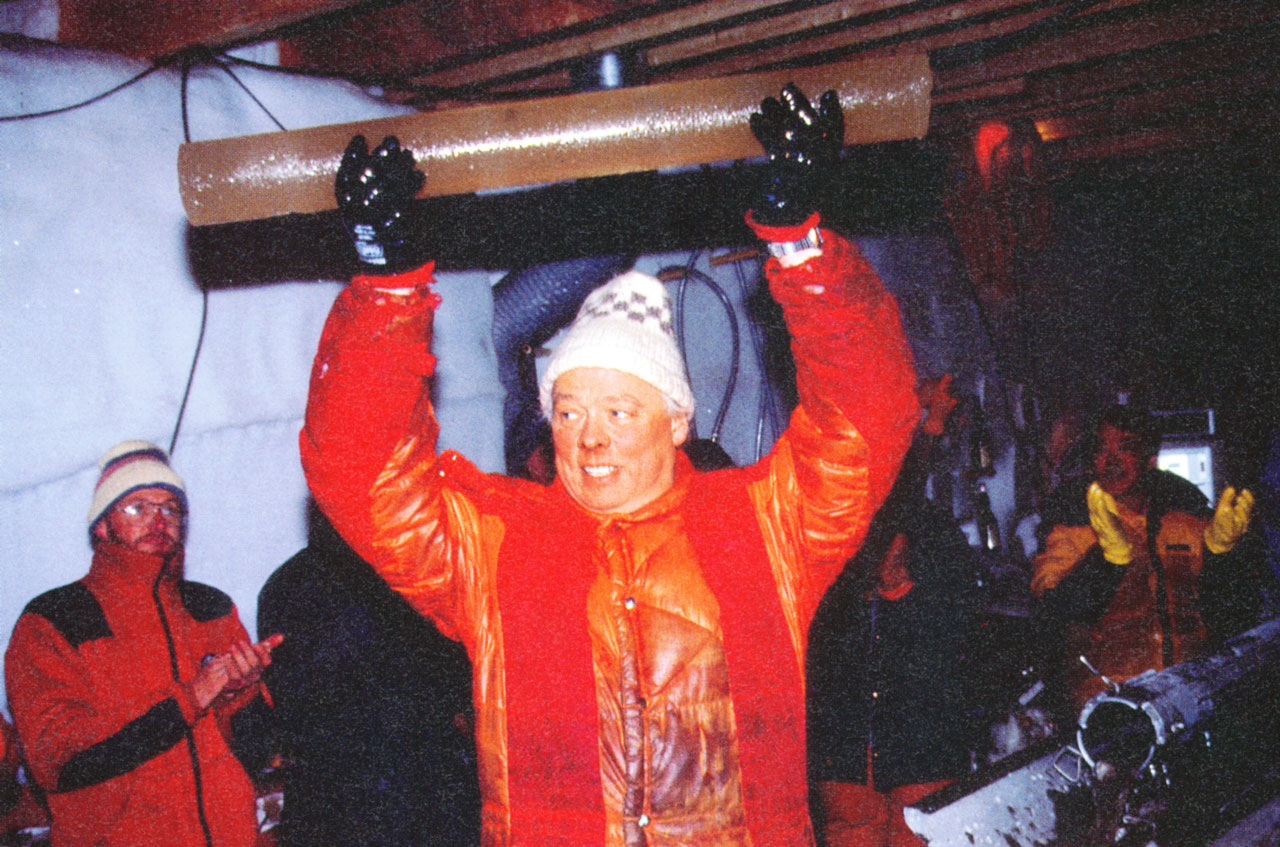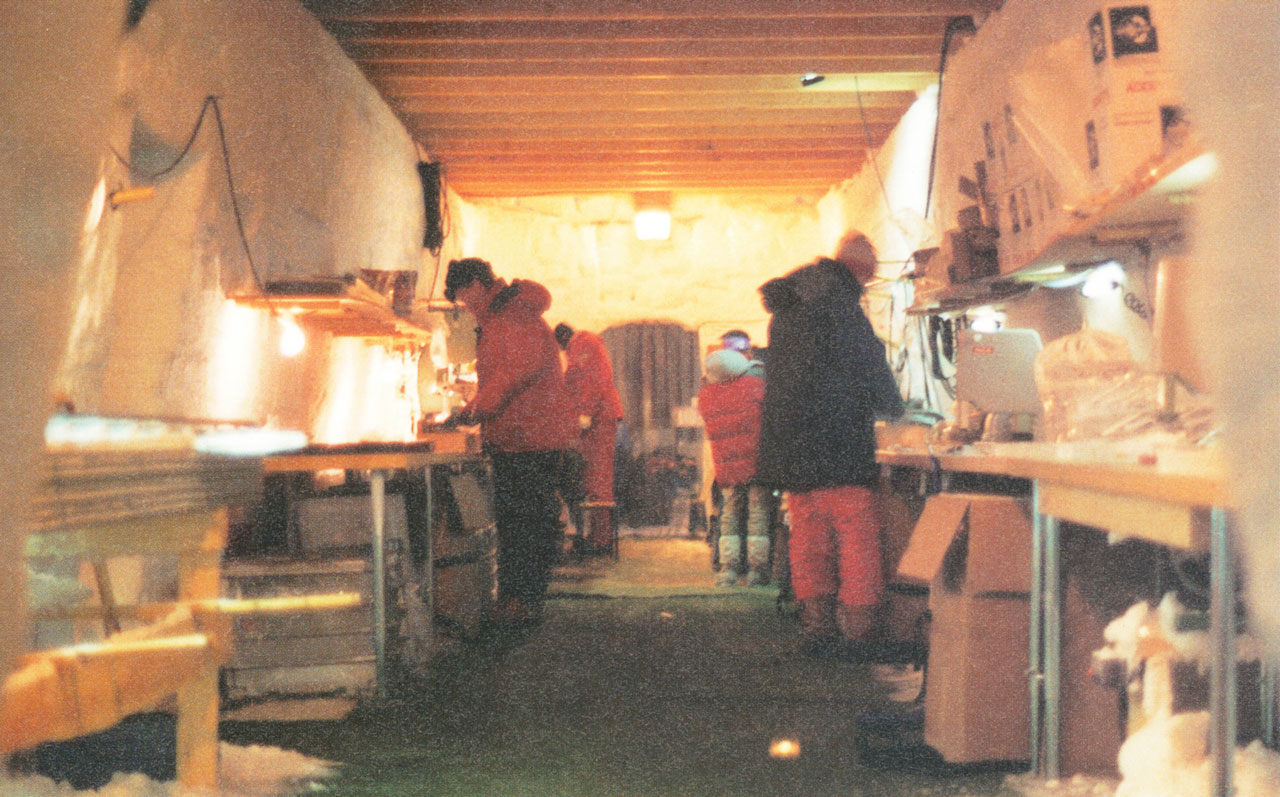The perfect drilling site
The Dye 3 drillings gave good results, but as expected, the core does not go as far back in time as the Camp Century core had gone and Willi Dansgaard is still interested in completing a new drilling project. In 1986, Dansgaard and his collaboration partners find the ice sheet’s highest point, Summit, which for that reason is very suitable for drilling.

Friends and competitors
In addition, using radar they can determine that the bottom is almost completely even – unlike at Dye 3, where there are mountains – and that “bottom melting” has probably never taken place. ”We found that all of this together indicated that we had found the best drilling site,” writes Dansgaard.
But unfortunately the Americans create problems, because they do not think that they have gotten enough out of the previous drillings nor that they are geared up for a new drilling yet.
When Dansgaard’s good friend and contact at CRREL, Chester Langway (who in the meantime had also become a professor at New York State University in Buffalo, New York) was also sidelined for political reasons, it convinces Dansgaard and the others that the Americans are in fact trying to ”keep us busy talking until the United States one day developed a deep drill that we might be allowed to help operate as drill boys,” he explains.
World record!
Willi Dansgaard and his team therefore choose to go directly to the EC and apply for funding for the new drilling – the so-called GRIP project or the Greenland Ice-core Project with participation from several European countries.

This causes the Americans to realise that they better hurry if they are to compete with Europe in the field and it ends with two Greenland drilling sites being established within 30 km of each other, the European/international GRIP and the American GISP2.
However, the collaboration goes smoothly with sports matches between the two teams and even though the Americans have a lot more equipment than the Europeans, it is a close race.
On July 12, 1992, the European drilling has to be suspended, because the cutting blades are hitting gravel and stone – they had in fact reached the bottom at a depth of 3029 meters – and set the world record in ice core drilling!
The Americans come over to congratulate them an “it turned into a huge party with dancing outside - a quiet, wonderful evening that ended with dancing around a bonfire while singing ”Auld Lang Syne,” explains Dansgaard. Two months later he retires at the age of 70.

Aftermath
The Americans hit bottom the following year and both projects end up with an ice core that is more than three kilometers long and even more detailed with respect to the last ice age.
On the other hand, when the two cores are compared they discover, unfortunately, that the bottom 300 meters of the ice core is “folded” due to the ice flowing over the uneven bottom and as a result they cannot rely on the data from the last interglacial period, the Eemian.
However, the analysis is carried out with unprecedented precision and temporal resolution and provides detailed information 105,000 years back in time. It shows, for example, that our own interglacial period, the Holocene, has been surprisingly climatically stable and they once again find the temperature variations from the last ice age.

The results are published in a number of articles written by researchers from all of the participating countries and the conclusions revolutionise the understanding of past climate conditions.
After his retirement, Willi Dansgaard helps to organise a major exhibition about ice cores in France. The exhibition, which displays ISTUK and the Rolls Royce drill, draws a large crowd and is later exhibited in six countries.
In 1995, the Royal Swedish Academy of Sciences awards Willi Dansgaard the so-called Crafoord Prize, which represents the highest international recognition in the field of geophysics and is comparable to a Nobel Prize in physics or chemistry.
In 1996, he receives, along with Oeschger and another, the Tyler Prize, the highest award in the field of climate research.
In 2000, Willi Dansgaard writes his autobiography "Grønland i istid i nutid" (Greenland in the ice age and the present) and in January 2011 he dies at the age of 88.
